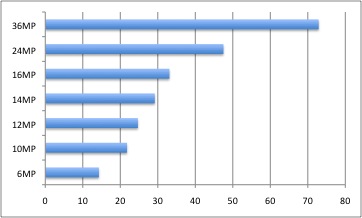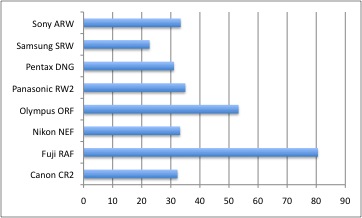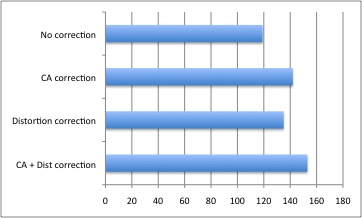As part of my attempt to puzzle out why Adobe Lightroom has been (comparatively) slow with my E-M5, I’ve taken a number of timings of different attributes. Among other things I’ve concluded that:
- There’s no significant difference in speed between versions 1, 2, 3 and 4.
- Import speed scales roughly linearly with image resolution – a file with 2x the megapixels will take approx. 2x the amount of time to import.
- Different RAW file formats generally don’t impact processing speed, with the exception of Fuji’s RAF, Olympus’s ORF and Samsung’s SRW. The Fuji and Olympus files are slower to process (roughly 150% and 60% respectively), and the Samsung slightly faster.
- Correcting for lens flaws – particularly in the case chromatic aberration, does cause some slowdown.
Concerning the different Lightroom versions, I timed the import of 100 6MP Nikon NEF files, using default settings. Version 3.6 and 4.2 are about 5% and 10% faster than their predecessors. Version 2.7 is imperceptibly slower than version 1.4.
 Measurement in seconds
Measurement in seconds
To compare performance on files of difference resolution, I timed the import of 10 Nikon NEF files of each resolution. The 12, 16, 24 and 36MP files were 14-bit, while the 6, 10 and 14MP files were 12-bit. Nonetheless, the result is pretty close to linear in terms of the relation between the resolution of the file and the time taken to import.
 Measurement in seconds
Measurement in seconds
As to the different file formats, I used 10 16MP RAW files in each format as my test case. Most of the files – those from Canon, Nikon, Panasonic, Pentax and Sony – take very close to the same amount of time to import (using default settings). The Fuji files are from their X series mirrorless, which uses a non-Bayer color filter array. This requires a custom demosaicking algorithm, which I suspect is why processing is so much slower. I have no idea why Olympus ORFs perform differently – even the very comparable Panasonic RW2 which come from a 16MP micro 4/3 camera – import at basically the same speed as the other formats. The Samsung files are only 14.6MP (no Samsung sensor has 16MP) but perhaps more importantly they’re uncompressed, explaining why they’re a bit faster than the others.
 Measurement in seconds
Measurement in seconds
Finally, to measure the effect of lens correction, I used 100 6MP Nikon NEF files and recorded import time with no corrections, with CA correction enabled, with distortion/vignetting correction enabled, and with all 3 enabled. The difference between no correction and all three was around a 25% slowdown.
 Measurement in seconds
Measurement in seconds
